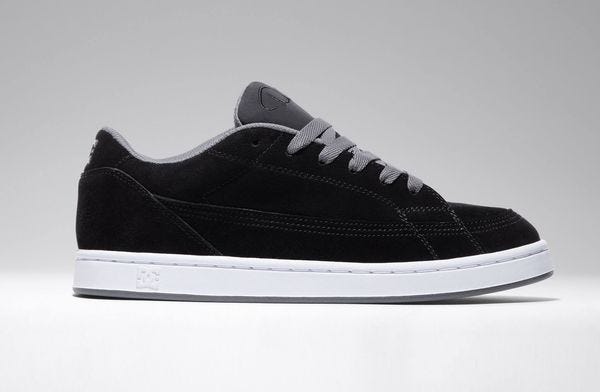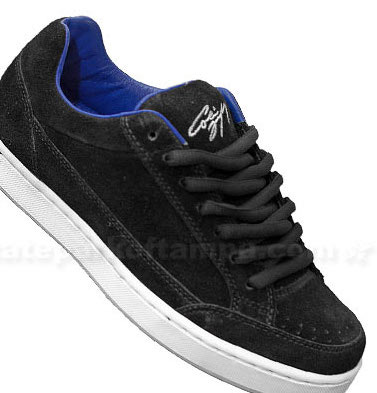Colin Nagy | October 10, 2024
The DC Shoes Edition
On positioning, innovation, and entrepreneurship
Colin here. In the WITI Slack, Ryan M. shared a pair of vintage Es skate shoes, stemming from a wide ranging footwear conversation. This took me back to that unique era when skate shoes transitioned from the stripped-down minimalism of Vans to more exaggerated, distinctive designs. I vividly recall this shift around 1996. Some of the top skaters at my school sported early versions of the first Colin McKays (CM1) from DC Shoes. These shoes stood out, offering a refreshing shift from known brands, signaling both style and insider knowledge. Diving deeper into DC’s history, I unearthed some astute strategic positioning. DC adeptly borrowed strategies from other sports and categories, building a great brand in the process.
The Danny Way 1
Colin McKay’s Signature Shoe
Why is this interesting?
Founded in 1994, DC quickly resonated with skaters eager for innovation and keen to be early adopters. At its core, DC's philosophy treated skaters as athletes, focusing on infusing higher performance into their footwear. This approach leaned more towards Nike's innovative designs rather than the previously dominant minimalist Vans.
In their marketing, they adopted strategies reminiscent of the NBA and other major sports, propelling skaters to superstar status. According to a history of the brand:
By 1997, DC had established a solid reputation, thanks to their endorsements from eight professional skaters who embarked on a world tour to showcase their skills and promote the brand. That same year, DC expanded its influence by establishing Motocross and Surf Teams, firmly planting their roots in the Extreme Sports realm. Their exceptional media coverage and high-octane events, like Danny Way's jaw-dropping 10-foot leap from a helicopter onto a DC-branded ramp, allowed DC to dominate not just the sports segment but also the fashion world.
Danny Way's helicopter stunt in 1997 was groundbreaking, foreshadowing the extreme sports marketing spectacles often associated with brands like Red Bull today. DC also left a mark with product innovation. Sung Choi's 1997 design for DC, the Lynx, remains a cult favorite among skate sneakers.
Many DC riders, mirroring pro basketball players, incorporated their own design preferences, elevating numerous skaters to icon status. DC stands as a fascinating study of a brand that played a pivotal role in propelling a subculture sport into mainstream recognition. This ascendancy can be attributed not just to the skaters' skills but also to a visionary entrepreneurial approach. (CJN)
—
Thanks for reading,
Noah (NRB) & Colin (CJN)

